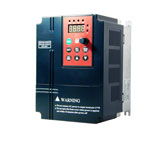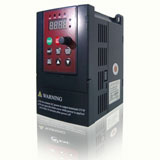VFD for fan application, V/Hz control or vector control?
V/Hz was the original methodology developed by VFD manufacturers. One of the weaknesses in V/Hz is starting torque and lack of control. Vector type methodology was developed in the 80s to give better control at lower frequencies but could not go to 0 speed. Therefore a third methodology, Field Control, was developed that can give full torque at 0 speed.
A fan application does not need torque at 0 speed and really normally (unless very large) need much torque at very low speeds. A V/Hz will do fine as will a vector. Efficiency should be similar in both technologies. Due to volume, cost is probably similar. All VFD vendors still have V/Hz technology for multi-motor applications. Both vector and field methodologies must have a single load, if multiple motors are used V/Hz must be used.
It is the best way to try it. Set a fan drive in V/F mode and measure motor current, and set in SVC mode and measure the motor current in same mechanical environment. I did for check myselves only. In V/F mode the motor current was 16 A, in SVC mode 10,5 A at same speed. What is the best?
I concur that my testing also revealed lower current draw in open loop (OL) vector on the same application (high inrush current app), we attributed this to the VFD controlling the current more precisely in OL Vector mode.
Also, as a side note, most VFDs now have energy savings mode which will adjust the acceleration to keep current low while getting up speed (different VFD manufacturers do this in different ways), as opposed to following the defined ramp, as most fans are not critical acceleration so you may consider turning on this function for additional cost savings, the larger the motor the more the savings.
A fan application does not need torque at 0 speed and really normally (unless very large) need much torque at very low speeds. A V/Hz will do fine as will a vector. Efficiency should be similar in both technologies. Due to volume, cost is probably similar. All VFD vendors still have V/Hz technology for multi-motor applications. Both vector and field methodologies must have a single load, if multiple motors are used V/Hz must be used.
It is the best way to try it. Set a fan drive in V/F mode and measure motor current, and set in SVC mode and measure the motor current in same mechanical environment. I did for check myselves only. In V/F mode the motor current was 16 A, in SVC mode 10,5 A at same speed. What is the best?
I concur that my testing also revealed lower current draw in open loop (OL) vector on the same application (high inrush current app), we attributed this to the VFD controlling the current more precisely in OL Vector mode.
Also, as a side note, most VFDs now have energy savings mode which will adjust the acceleration to keep current low while getting up speed (different VFD manufacturers do this in different ways), as opposed to following the defined ramp, as most fans are not critical acceleration so you may consider turning on this function for additional cost savings, the larger the motor the more the savings.



